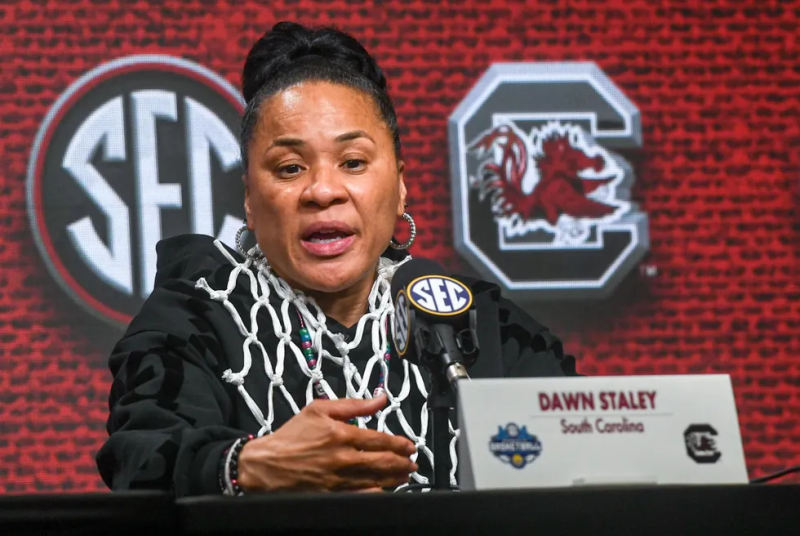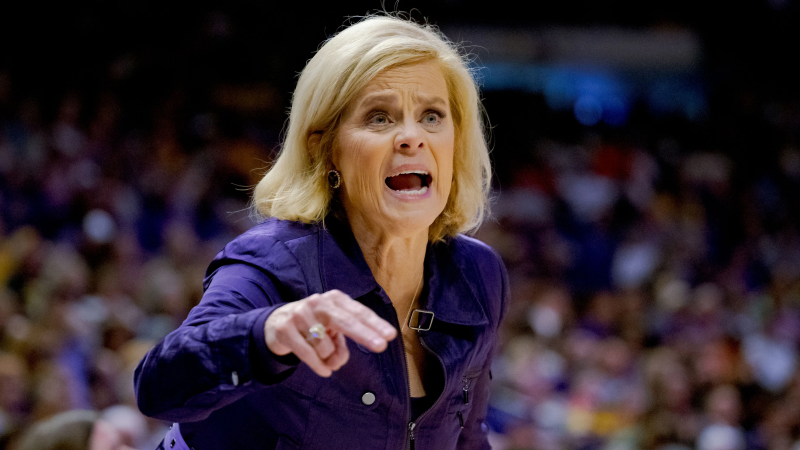More women's basketball coaches are making at least $1M annually, but some say not enough
When Teri Moren signed a contract in March 2023 that put her guaranteed base pay at more than $1 million annually, the Indiana women’s basketball coach was thrilled.
But that’s not the word she would use to describe her reaction when she discovered she was one of only 18 coaches in Division I women’s basketball who have hit the $1 million milestone, especially when you consider there are 69 Power Five jobs across America.
“That’s not enough,” Moren, now in her 10th year coaching the No. 15 Hoosiers, told USA TODAY Sports. “You compare it to men’s basketball and it’s not even close. We have to keep closing that gap, especially with women head coaches. We need to get more women in the million-dollar club.”
This season, according to USA TODAY Sports' salary review of women’s basketball head coaches, Moren is making $1.25 million, eighth on the list. It’s an increase from 2022, the last time USA TODAY Sports surveyed women’s basketball coaches pay. Moren then made $800,000 annually, ranking 20th. Her bump in pay speaks to the success the Hoosiers have had, including earning a No. 1 seed in the 2023 NCAA Tournament after winning the Big Ten regular season championship.
In 2022, 11 women’s coaches were making $1 million or more in annual base pay. Considering how much more popular women’s college basketball is now — TV ratings set new viewership records seemingly every week, and the Caitlin Clark effect has made sellouts more commonplace for Iowa games — the 18 number might seem low. Also of note, two of the coaches making $1 million or more in 2022 have since retired: C. Vivian Stringer from Rutgers ($1.2 million in 2022); and Gary Blair from Texas A&M ($1.250 million).
IT'S BRACKET MADNESS: Enter USA TODAY's NCAA tournament bracket contest for a chance at $1 million prize.

For years, the revenue generated by women’s basketball, which pales in comparison to men’s basketball, has been schools’ reasoning for paying women’s coaches significantly less, regardless of success. But that needle is starting to move, particularly with the addition of a unit distribution model — where schools are awarded monetarily for playing and advancing in the NCAA Tournament — which is expected next year, according to NCAA president Charlie Baker.
“We all know what pays the bills right now under the current model and it's successful football," said Texas executive senior associate athletics director Chris Plonsky, who is UT's senior woman administrator. "But I also know that when football is unsuccessful and people continue to be paid for not coaching and universities are having payouts for non-performers, the irony of that has flipped around where leaders, presidents have said, 'If we're going to invest money (let's invest) in people whose work we can watch.'
"Dawn (Staley) and Kim Mulkey and Vic Schaefer, they’ve earned every penny."
The 18 coaches making $1 million or more all work at public institutions; a handful of private school coaches reportedly make similar money, including three-time national champion Tara VanDerveer at Stanford, who earlier this season surpassed former Duke men’s coach Mike Krzyzewski as the all-time wins leader in college basketball.
David Berri, a sports economics professor at Southern Utah, said a major issue when it comes to women’s sports making profit — which would lead to more women's coaches getting premium salaries — comes down to television.
“The TV deals people make for them, they’re really lousy,” Berri explained. “In women’s basketball, one thing that holds back women’s revenue is the NCAA is run by men, who don’t try very hard” to sell women’s sports.
In January, the NCAA announced details for a new eight-year, $290 million media rights deal that will keep the NCAA women’s basketball tournament, along with 39 other NCAA championships, on ESPN for the foreseeable future. Though it is roughly a three-fold increase from the current deal, it is significantly less than the independent report commissioned in 2021 estimated the women’s basketball rights alone could be worth. The new deal goes into effect next season.
Dawn Staley, Lisa Bluder believe assistant salary pools need to grow
Moren is determined to help lift her profession. The 54-year-old said there is “no doubt” that she wants to be a leader on and off the court.
“I feel like it’s just one of my responsibilities, especially as a female in this profession,” she said. “I love being an example of what can happen, what should be happening (if you invest). I take great pride in that. I want to fight for all of us.”
Moren credits Indiana athletics director Scott Dolson, who worked as a manager at Indiana under legendary coach Bobby Knight in the late 1980s, for recognizing how important women’s basketball is. She said Indiana’s success, coupled with its spike in attendance — in 2018-19, IU averaged just under 4,000 fans per game; this season average attendance is more than 10,000 per game — has put “good pressure” on Dolson and other administrators to make sure her program is taken care of.
Two years ago, when she signed a historic contract for more than $3 million annually, South Carolina’s Staley told USA TODAY Sports that the next step in women’s coaching pay was for assistant salary pools to be significantly increased. Moren understands that desire — she joked that women, especially assistants, always feel “overworked and underpaid” — but said getting more women’s coaches to a $1 million base pay is a bigger priority in her mind.

At Iowa, where coach Lisa Bluder makes $1.4 million, no one has helped elevate women’s college basketball more than reigning player of the year Clark. Bluder said the Hawkeyes' crowds prove people will pay big bucks to watch women’s hoops. But it remains to be seen what will happen after Clark leaves.
To Bluder, paying head coaches more vs. expanding salary pools isn’t an either/or proposition.
“You’re only as good as your staff,” Bluder said. “Both things are important.”
Contributing: Steve Berkowitz; Dan Wolken
Email Lindsay Schnell at lschnell@usatoday.com or follow her on social media @Lindsay_Schnell
Disclaimer: The copyright of this article belongs to the original author. Reposting this article is solely for the purpose of information dissemination and does not constitute any investment advice. If there is any infringement, please contact us immediately. We will make corrections or deletions as necessary. Thank you.







